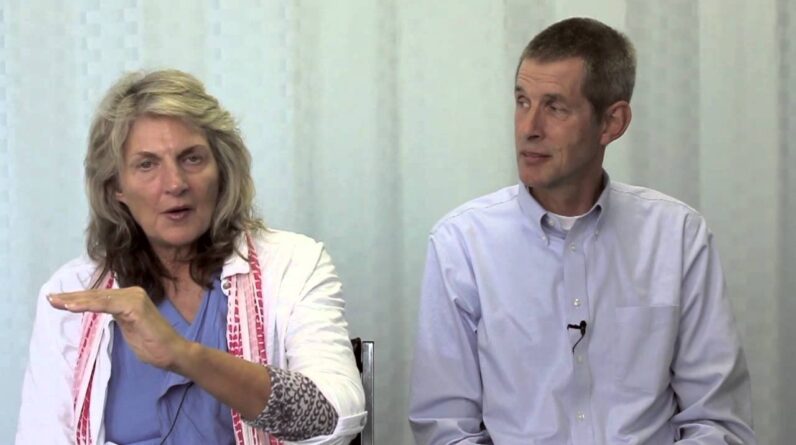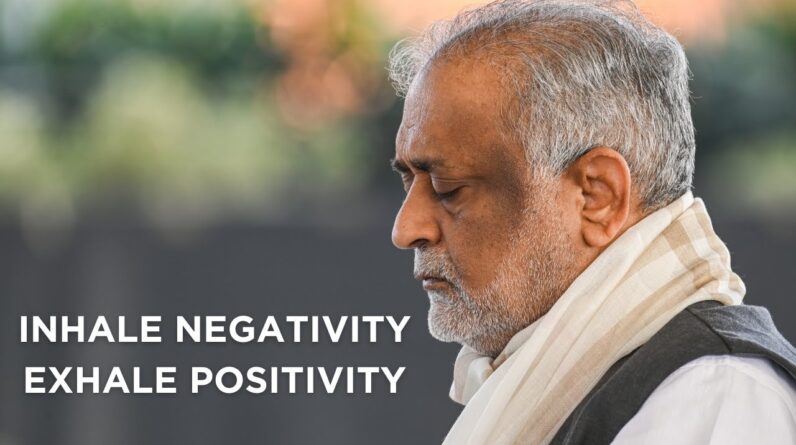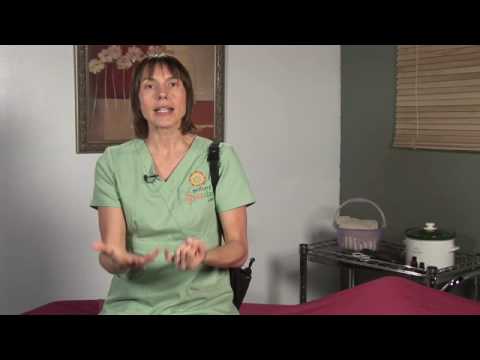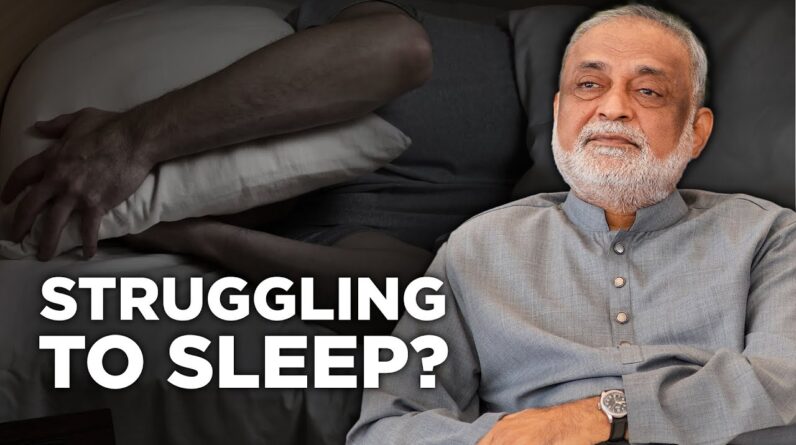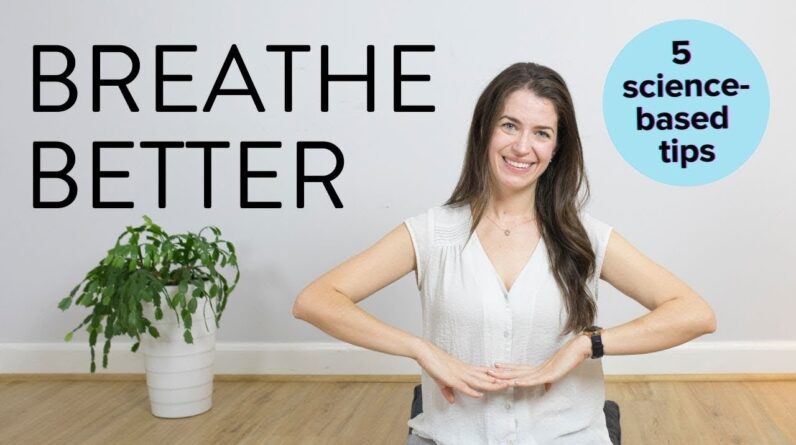
did you know that you have access to a part of your nervous system that you don't normally actually have access to through your breath by changing your breath you can change everything transforming the state of your physiology the state of your nervous system hi my name is ann swanson and today i'm going to talk about how you can transform and shift your breath in order to relieve pain and anxiety i have five tips and techniques that can help you so first thing is about how you breathe in your everyday life i want you to try to nose breathe this is really really important compared to mouth breathing nose breathing is much more efficient and it's your first line of defense your mucosal membranes in your nasal cavities have immune fighting antibodies that help you fight viruses and bacteria and when your nose breathe the air slowly moves through a maze of tissues right in this area did you know that you have basically like a billiard ball worth of space inside this area right here these are your sinuses and they're all lined with this mucosal membrane as your air moves through these spaces through your nasal cavity and down your throat it has more time to trap invaders it has more time to get warmed and humidified and prepare the air for your lungs so that your alveoli can more efficiently pull oxygen from them it's really key that the air moves slowly when you take those fast stress breaths often even up in the chest then the air is not properly prepared for your lung to get the most oxygen out of it the slow breath is key for that you absorb more oxygen from the same amount of air and when the air spins longer in your nasal cavities you release a chemical called nitric oxide which has a relaxation effect so this can be so helpful when you're dealing with pain and anxious feelings tip number two is to breathe low diaphragmatic or belly breathing is really helpful in order to breathe most efficiently and feel more relaxed so your diaphragm is situated right here it's separating your thoracic cavity where your lungs and heart are from your abdominal pelvic cavity and this muscle when you're breathing properly moves down with the inhale and then releases back up with the exhales so this rhythmic movement of the diaphragm has a relaxing effect it's more efficient also as far as breathing goes it gently massages your abdominal organs and you in general will feel more ease when you breathe like this so the third thing is to breathe slow i already mentioned this but you can consciously breathe slow also it's not even about how deep and full you breathe it's about slowing the breath down so let's actually put these things together we're going to nose breathe we're going to breathe low and slow together right now you can bring your hand to your belly if you'd like so that you can feel the movement and focus in this area you can close your eyes close your mouth and first start by feeling the breath moving in and out of your nostrils can you sense and feel how it warms and humidifies filters the air can you sense and feel how it slows the air can you feel the air moving through your throat into your lungs and now bring your awareness to where your hands are focus on a sense of allowing movement there not causing it to happen allowing it [Music] the inhales a sense of expanding as you fill up the belly pushes out slightly with the exhales releasing down and in of the ribcage and abdomen it's very subtle but feel this for a few moments what is it like to slow your breath down you may make the breath a little bit deeper and fuller if that feels good for you but focus really on slowing the breath bringing the breath down you can release your hands or keep them here whatever allows you to breathe like this for a few more moments and continue this breath while i'm speaking so this is a good way to breathe throughout the day noticing when you're mouth breathing closing your mouth only mouth breathing when you really have to and also remembering to bring the breath down low and slow breath now let me give you two more tips that can help enhance this effect even more tip number four is to elongate your exhales there's this interesting phenomenon that occurs with every single breath and it's very subtle so with every single inhale there's a slight increase of your sympathetic nervous system activity that's that part of your nervous system that helps you respond to stressors it helps you be more alert so with every inhale your heart beats a little tiny bit faster your blood pressure slightly ever so slightly goes up and the reverse happens with every exhale with every exhale there's more activity in the parasympathetic nervous system this means that your heart slows slightly that your blood pressure slightly ever so slightly goes down this arrhythmia is completely natural this variability is actually key for our health and what we can do is we can use this to our advantage yogis in ancient times intuited this they felt it themselves that when you elongate your exhales you go deeper into that relaxation state of the nervous system your blood pressure goes down you feel more ease so this you can do anytime anywhere you can do it when you feel an increase of pain or anxious feelings arising you can do it while you're in line at the grocery store and nobody has to know you're doing it but let's practice it together we're going to combine the low and slow with the nose breathing and elongate the exhales if you'd like to if it helps you can have your hand on your low belly or just in your lap whatever allows you to be more conscious and you're welcome to close your eyes start by making sure your nose breathing making sure you're breathing low and slow notice the rate the rhythm of your breath maybe you'll notice that your breath is even or maybe your exhale is already a little longer or shorter notice now let's just simply elongate those exhales trying to let as much of the breath out with each exhale without forcing few more breaths like this letting that exhale be long you can continue this elongated exhale as i give you the last bonus tip number five and it is actually to sing vocalizing adds an extra effect to those elongated exhales when you sing you are naturally elongating your exhales but you're also creating a sense of vibration in your throat area and in your chest this can help stimulate your vagus nerve which further induces that relaxation response so let's go ahead and do it now i will tell you i'm not much of a singer so i prefer a yogic technique called brahmary or b breath and basically we're just gonna hum or buzz like a bee but if you love singing i encourage you to help you manage pain and anxious feelings to sing as much as you can sing in the shower sing in the car it's good for your health but let's join together for this be breath we're going to do three long hums together but let me show you first because you can do this in a way that helps you bring your awareness more inward to feel those vibrations so you can plug your ears up and close them do that after i finish explaining it but also you can put your fingers on your face and your fingers your top fingers i like to have on my frontal sinus here so i can really feel the vibration in that space this finger could be over the eyes but i don't like that pressure on my eyes so right about here and then wherever these land around the nasal you're not closing your nose you're just feeling gently and you can close your eyes and then you'll plug your ears but let me just show you one first and then we'll do three together okay so now to really get the benefits you have to try it with me so just three breaths go ahead and plug your ears maybe put your fingers on your sinus spaces and close your eyes [Music] um [Music] just notice how you feel [Music] and i hope you will use these techniques through your everyday life to help you ease pain and those anxious feelings that can come up even around the pain thank you so much and be well [Music] you

